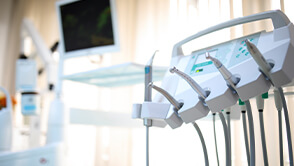
Looking Beyond Your Dental Office: The Future of Teledentistry
- Published
- Mar 2, 2021
- Share
Telehealth took off in 2015 and as things are progressing now, 2016 is panning out to be the year of teledentistry.
For dentists, this will mean a need to understand not only the technologies that make up teledentistry itself, but also how it will shape your patients’ relationship with oral care as well as the financial benefits it holds for your practice.
How the Teledentistry World Is Unfolding
Teledentistry isn’t a new service, but is instead simply a new channel for delivering existing dental services. As things stand today, teledentistry involves a combination of
- Synchronous live video
- Remote patient monitoring
- mHealth
- Store and forward technologies
In the future, expect to see tools including constant pH testing as well as smartphone integration and apps push the service delivery channel even further.
Potential Benefits for Your Patients
According to the ADA, only about 36% of children from families who were living at less than 100% below the federal poverty level visited a dentist in 2012. It’s also likely many of your adult patients are putting off seeking care because of cost issues. Teledentistry offers the potential to change the way different types of patients engage with dentistry.
Take the case of San Mateo County, California where some preschoolers are getting their first dental exam without ever being in the physical presence of a dentist. Instead of a traditional visit, children have their teeth cleaned by a hygienist, as well as have X-rays and pictures taken. The images are then sent (via the cloud) to a doctor, who reviews them from six miles away. The primary goal of programs like this is to improve preventative care and detect the need for more significant work such as root canals or crowns that will need to be performed in-person. Teledentistry also facilitates plan development for procedures including fluoride varnishes, sealants, and others that will eventually be performed under a qualified dentist’s supervision.
Teledentistry turns the issues of accessibility and cost on their head, giving more patients more care options. This means that your practice can drastically improve the treatment of patients including
- The elderly
- Physically or mentally disabled
- Lower income patients
- Rural/remote patients or patients living in unsafe areas
Potential Benefits for Your Practice
When the first whispers of teledentistry started, many professionals questioned its viability because of reimbursement issues. However, as it develops, more government programs and even private insurers are beginning to offer reimbursement. Medi-Cal for example, passed a law in 2015 that requires its providers be reimbursed for their remote work.
Teledentistry services also offer your practice the opportunity to attract new patients by offering them more convenience in their care options, something that companies like Apple Tree, a mobile and teledentistry provider, are taking full advantage of. The innovative non-profit has combined mobile dental offices and cloud-based telehealth solutions to provide over $22 million in dental care in 2014.
Teledentistry options can also mean more frequent services for your existing patients, helping you move patients who may be in the habit of infrequent evaluations to more frequent recommended schedules.
How to Prepare For a Future with Teledentistry
As with other areas of dentistry, it’s important to keep your eye on regulatory bodies and professional organizations.
The ADA is taking teledentistry more seriously with its House of Delegates passing Resolution 45H-2015 in December of last year and establishing guidelines around this service offering. According to Dr. Paul Glassman, director of the Pacific Center for Special Care at the Arthur A. Dugoni School of Dentistry at the University of the Pacific,
“I think it’s already sweeping the country. I predict that within a couple of years, every state will have legislation supporting teledentistry…Dentists are realizing it’s a way to expand their practice and not be bound by the four walls of their office.”
Building a functional teledentistry program that is truly beneficial to your patients will take some time. You can begin by asking colleagues for recommendations to trusted vendors or solutions that they may have heard about or used. For a preview, you can review apps like Denteractive and OpticDental to familiarize yourself with the current teledentistry environment.
Most importantly, though, start talking to your patients (via surveys and questionnaires) about their potential interest in remote dentistry solutions so that you fully understand their comfort with changes in how their dental services are provided.
Contact EisnerAmper
If you have any questions, we'd like to hear from you.
Receive the latest business insights, analysis, and perspectives from EisnerAmper professionals.






